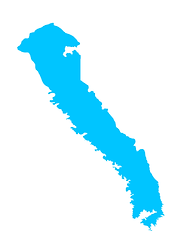HIgh Sierra Nevada

These mountains form the eastern spine of the state and feature a classic mixed-conifer type that includes, in various proportions at various locations, many of the following tree species: ponderosa pine, sugar pine, white fir, incense-cedar, Douglas-fir, and California black oak. Higher elevations feature red fir, lodgepole pine, mountain hemlock, and whitebark pine (and pinyon pine in the south). On the eastern slopes and certain parent materials, Jeffrey pine replaces ponderosa pine. Giant sequoia is also a prominent component of the low- to mid-elevation conifer forests throughout much of this region.
• Typical insect and disease problems
• Bark beetles (Ips, Dendroctonus, and Scolytus species) in conifers
• California flatheaded borer (in pines) and flathead fir borer (in Douglas-fir)
• Heterobasidion root disease
• White pine blister rust
• Cytospora canker in true fir
• Dwarf mistletoes in conifers
• Blackstain root disease in ponderosa, Jeffrey, and pinyon pines
• Douglas-fir tussock moth
• Lodgepole pine needleminer










